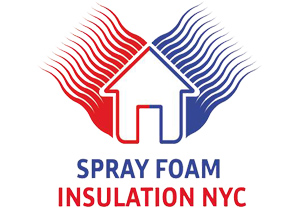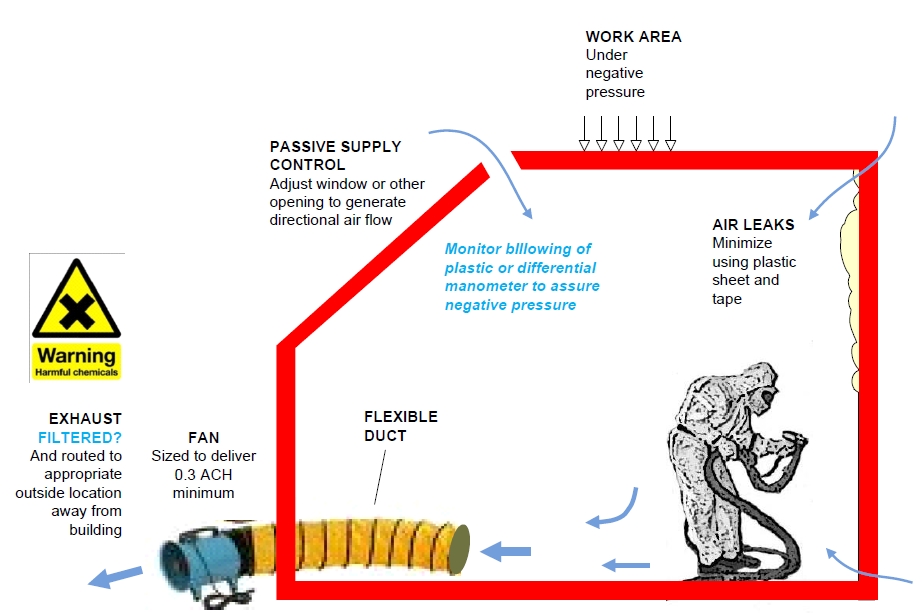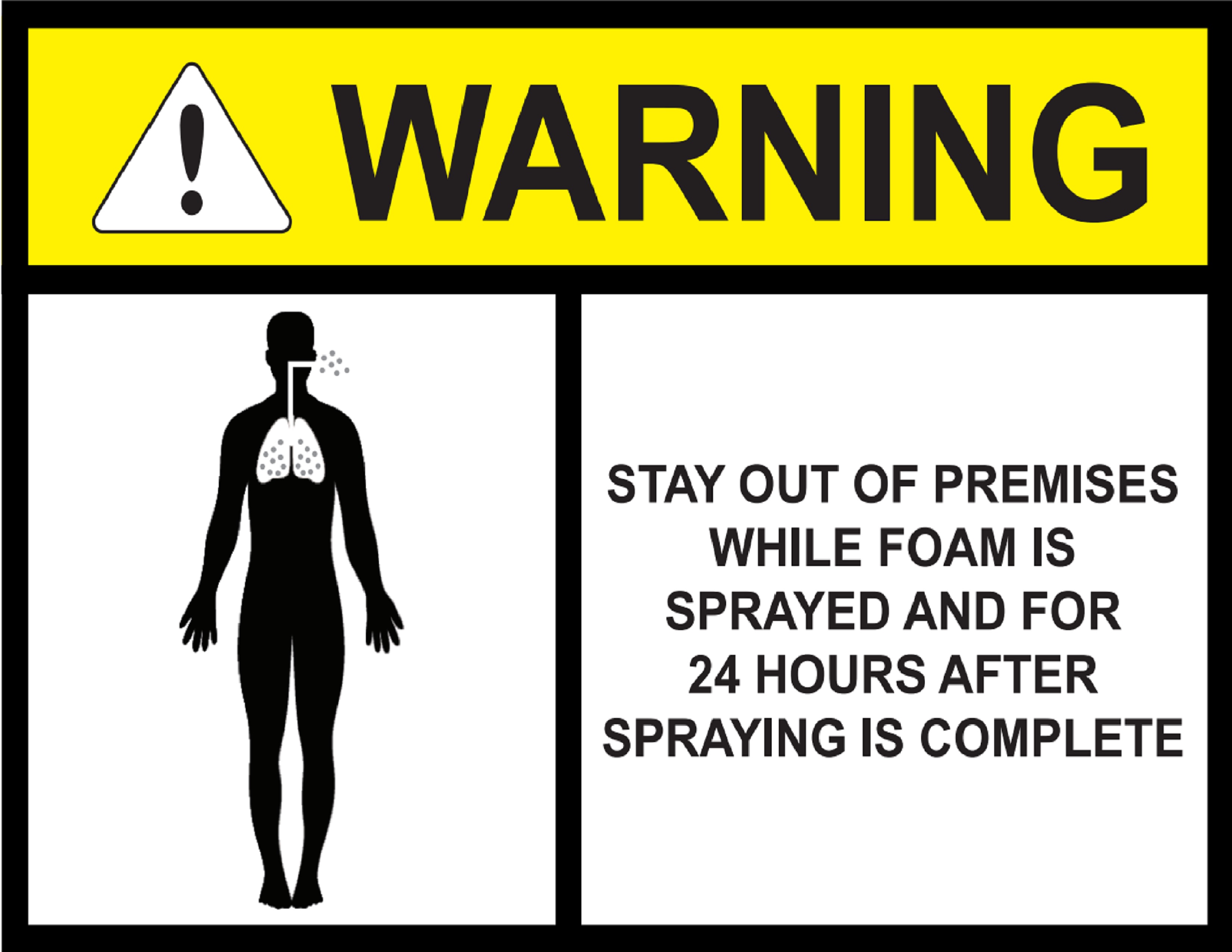Health & Safety - Spray Foam Insulation
COMMITTED TO THE RESPONSIBLE USE OF SPRAY FOAM CHEMISTRY FOR OVER 25 YEARS.
Icynene spray foam insulation products have an excellent health and safety
record spanning more than 425,000 projects over more than 25 years.
Nonetheless, safe handling practices during and immediately following
installation are required to eliminate the possibility of health effects from
exposure to isocyanates. Asthma, other lung problems, and irritation of the
nose and throat can result from inhalation of isocyanates. Direct contact
with the skin and eyes can result in irritation. Different individuals will react
differently to the same exposures; some will be more sensitive than others.
Everyone (other than Icynene-certified spray technicians) must vacate
the job site, remaining completely out of the building or at least 50 feet
away, while the spray is applied and for at least 24 hours after spraying
is completed to allow active ventilation of the job site and to ensure the
foam chemicals are completely cured. No exceptions.
For installations of low VOC products Icynene ProSeal and
Icynene ProSeal LE in the United States only, re-occupancy of
the job site is permitted after 2 hours provided that the rate of
air exchange during spraying and for 2 hours thereafter equals
or exceeds 40 Air Changes per Hour (ACH). For applications
of low VOC Icynene Classic Max in the United States only,
re-occupancy is permitted after 2 hours provided rate of air
exchange during and for 2 hours thereafter equals or exceeds 10
Air Changes per Hour.
Independent studies and third party toxicologist verification indicates that
when the prescribed ventilation rates and periods are followed, Icynene
spray foam insulation is safely cured.
record spanning more than 425,000 projects over more than 25 years.
Nonetheless, safe handling practices during and immediately following
installation are required to eliminate the possibility of health effects from
exposure to isocyanates. Asthma, other lung problems, and irritation of the
nose and throat can result from inhalation of isocyanates. Direct contact
with the skin and eyes can result in irritation. Different individuals will react
differently to the same exposures; some will be more sensitive than others.
Everyone (other than Icynene-certified spray technicians) must vacate
the job site, remaining completely out of the building or at least 50 feet
away, while the spray is applied and for at least 24 hours after spraying
is completed to allow active ventilation of the job site and to ensure the
foam chemicals are completely cured. No exceptions.
For installations of low VOC products Icynene ProSeal and
Icynene ProSeal LE in the United States only, re-occupancy of
the job site is permitted after 2 hours provided that the rate of
air exchange during spraying and for 2 hours thereafter equals
or exceeds 40 Air Changes per Hour (ACH). For applications
of low VOC Icynene Classic Max in the United States only,
re-occupancy is permitted after 2 hours provided rate of air
exchange during and for 2 hours thereafter equals or exceeds 10
Air Changes per Hour.
Independent studies and third party toxicologist verification indicates that
when the prescribed ventilation rates and periods are followed, Icynene
spray foam insulation is safely cured.
What is the difference between re-entry and re-occupancy?
Re-entry is defined as entry into the work zone without requirement for Personal Protective Equipment (PPE) for the resumption of trades work during a normal eight hour work day whereas re-occupancy is the permanent, 24-hours-per-day return into the space by building owners/occupants
Spray Foam Safety Information
Spray Polyurethane Foam Health & Safety
Spray polyurethane foam (SPF) is a highly effective and widely used insulation and air sealant material. However, exposure to the chemical components that react to make SPF can pose serious health risks. Whether you are an applicator, assistant, or building occupant where this product is applied, follow these tips:
Spray Foam Health and Safety Initiatives
With the use of spray polyurethane foam (SPF) expected to increase over the coming decades, trade associations like the Spray Polyurethane Foam Alliance (SPFA) and the Center for the Polyurethanes Industry (CPI) of the American Chemistry Council (ACC) are working on safety, training, and product stewardship programs intended to enhance professional SPF contractors’ understanding of the safe application and handling practices of Spray Foam. These important initiatives will also reach beyond professionals to homeowners and those in the building and construction community.
Spray polyurethane foam (SPF) is a highly effective and widely used insulation and air sealant material. However, exposure to the chemical components that react to make SPF can pose serious health risks. Whether you are an applicator, assistant, or building occupant where this product is applied, follow these tips:
- Review the label and product information for chemical ingredients, hazards, directions, safe work practices, and precautions.
- Ensure health and safety training is completed and safe work practices are followed to prevent exposure before, during, and after an installation.
- Exercise caution when determining a safe reoccupancy time for unprotected occupants and workers based on the manufacturer recommendation
Spray Foam Health and Safety Initiatives
With the use of spray polyurethane foam (SPF) expected to increase over the coming decades, trade associations like the Spray Polyurethane Foam Alliance (SPFA) and the Center for the Polyurethanes Industry (CPI) of the American Chemistry Council (ACC) are working on safety, training, and product stewardship programs intended to enhance professional SPF contractors’ understanding of the safe application and handling practices of Spray Foam. These important initiatives will also reach beyond professionals to homeowners and those in the building and construction community.


